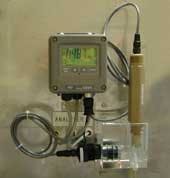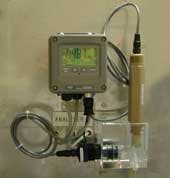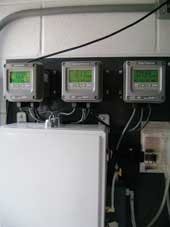by John Becker adn Michael Strahand
The US historically uses both groundwater and surface water as a source of drinking water. In addition to concerns over the availability of groundwater, there can be significant issues with water quality when groundwater and surface water are mixed. Most surface water treatment plants use chlorine as a disinfectant, while chloramine is often used for the disinfection of groundwater for drinking water.
When groundwater and surface water mix in the distribution system, the chlorine and chloramine disinfectants combine to form a residual substance which contains ammonia, free chlorine and monochloramine. As a result of the increasing combination of surface water and groundwater, it is essential that water treatment plants are able to carry out accurate monitoring of these chemicals in water to avoid any potential health consequences.
Ammonia monitoring has traditionally been undertaken by automated versions of ammonia-selective ion electrodes, but these methods are geared toward laboratory applications. These conventional systems generally use expensive and complex instruments which are difficult to maintain and often require external service contracts.
Technology recently introduced to the water market offers a completely new approach to simultaneous on-line monitoring of chloramines and ammonia which is simpler, cheaper and more stable than conventional monitoring equipment. With this technique, measurement of both ammonia and chloramine can be carried out on one instrument.
The technique has been adopted by Analytical Technology Inc. (ATi) and is incorporated in its new Q45N Dissolved Ammonia Monitor. The system uses reaction chemistry to convert ammonia in a solution to a stable monochloramine compound, equivalent in concentration to the original ammonia level. The chloramine concentration is then measured with a unique amperometric sensor that responds linearly to chloramines while eliminating interface from excess free chlorine in solution.
Much cheaper than conventional monitors, the new technology has the added advantage of allowing direct re-injection of the water withdrawn for monitoring purposes back into the distribution system without the need for discharge to a sewer. Maintenance of the new monitors is simple and can be managed by utility staff. The new Q45N monitor can also be used with ATi’s free chlorine monitor to provide measurement of free chlorine, chloramines, free ammonia and total ammonia.
The Q45N system consists of a wall mounted chemistry system and an electronic display and alarm package. The chemistry system contains the necessary metering pumps to provide chemical addition to the sample and delivery of the sample to the sensing element. The electronic display and alarm package provides the user interface to the system. Ammonia concentration is displayed on a large format LCD display with secondary display for other operating variables.
Case Study
In 2003 the State of Texas mandated that the amount of groundwater consumed by municipalities should be cut, as aquifers cannot be recharged quickly enough to meet the state’s increasing demand for water. In setting out these groundwater protection goals, the authority specified that wherever possible, surface water should be used instead. Since 2003, 51 districts have adopted water management plans, including a water utility which serves the Houston area.
The water utility monitors water on both incoming and outgoing streams in order to determine levels of ammonia, chloramines and free chlorine. One panel of the treatment system contains the Q45FN ammonia monitor and a Q45H/62 free chlorine monitor. Each of the water utility’s sites requires two panels, and each storage facility has a booster system to reinstate the disinfectant level when the two types of water mix, thereby ensuring that drinking water is properly disinfected and free from potentially harmful reagents. By using this technology, the water utility has lowered the overall cost of ammonia monitoring.
About the Authors:
John Becker is President of Analytical Technology Inc. He has a BA in Chemistry from Carleton College, and has more than 25 years of experience with on-line analyzers and their application to the water and wastewater industry. Michael Strahand is General Manager of Analytical Technology Inc. in Europe. He has more than 20 years’ experience with gas and water monitors and is particularly interested in ammonia and chlorine measurement in water and wastewater.





